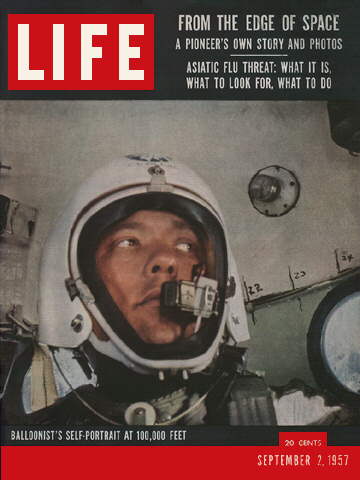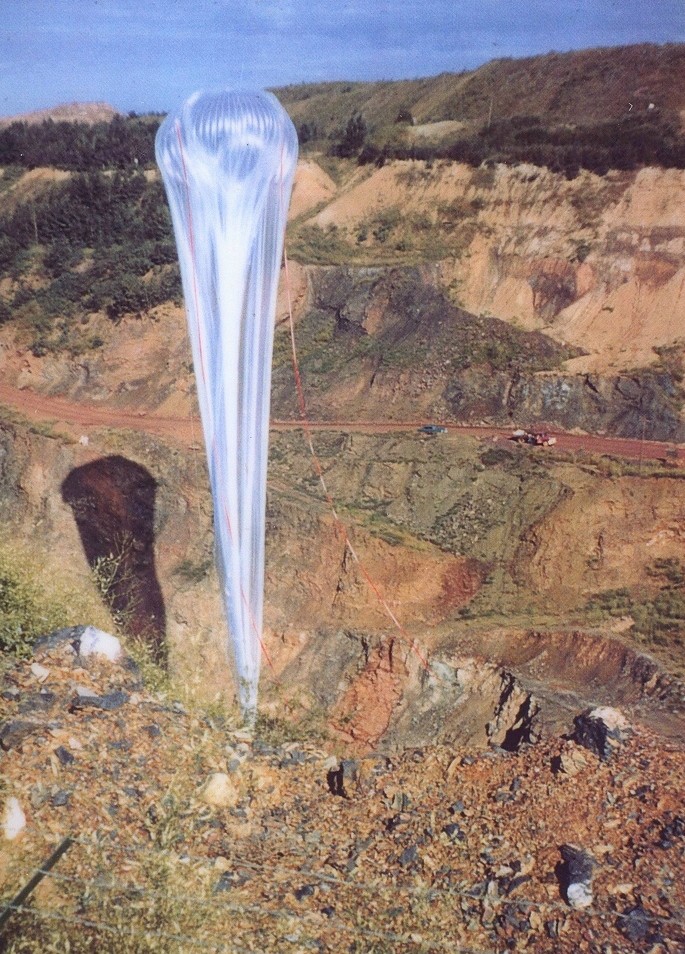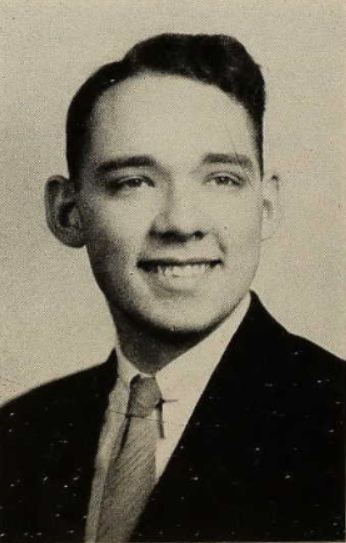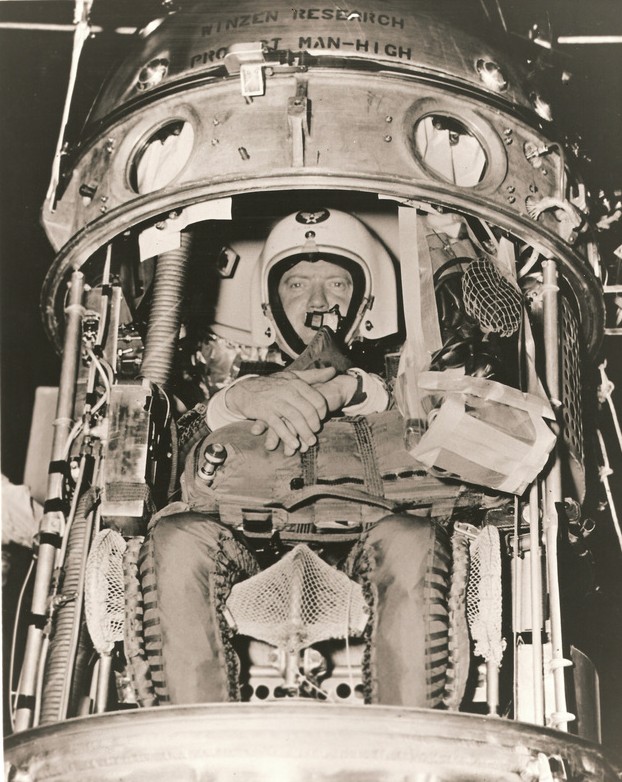
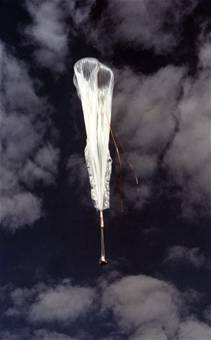
2 June 1957: At 6:23 a.m., Central Daylight Time (11:23 UTC), Captain Joseph W. Kittinger, Jr., United States Air Force, lifted off from Richard E. Fleming Field (SGS), South Saint Paul, Minnesota, in the gondola of a helium balloon designed and built by Winzen Research Inc.
At 8:04 a.m. (13:04 UTC), Captain Kittinger reached a pressure altitude of 95,000 feet (28,956 meters). This was only 400 feet (122 meters) short of the balloon’s theoretical pressure ceiling. Using U.S. Weather Bureau data, the linear altitude of the balloon was calculated to have been 97,000 feet (29,566 meters).¹
The Fédération Aéronautique Internationale (FAI) was not asked to certify this flight, so an official record was not set.
Project MANHIGH I was intended to test various equipment and human physiology in a near-space condition. Cosmic radiation was a particular concern. This was the first of many high-altitude research balloon flights that Kittinger would make.
. . . A Winzen crew conducted the launching, as provided by the Man-High contract, in collaboration with members of the Aeromedical Field Laboratory and other units at Holloman. The 475th Air Base Squadron, Minneapolis, provided additional helicopter support. The vehicle was a two-million-cubic-foot plastic balloon, 172.6 feet in diameter, which quickly reached the planned ceiling altitude of 95,000 feet, setting a new record for manned balloons. Test specifications called for a twelve-hour flight. However, because of an oxygen leak (due to an improperly connected valve) and also certain communications difficulties, Colonel Stapp and Mr. Winzen decided that Captain Kittinger should come down after not quite two hours at altitude. The balloon pilot was not happy with the decision, replying by radio, “Come and get me.” But he did come down, and landed successfully at 1257 hours none the worse for his experience.
— History of Research in Space Biology and Biodynamics, Part II, Chapter 3, NASA History Office, December 1958.
Kittinger landed next to a stream approximately 7 miles (11 kilometers) south-southwest of Alma, Minnesota. The total duration of his flight was 6 hours, 36 minutes. He was awarded the Distinguished Flying Cross, the first of six he would receive during his career in the Air Force.
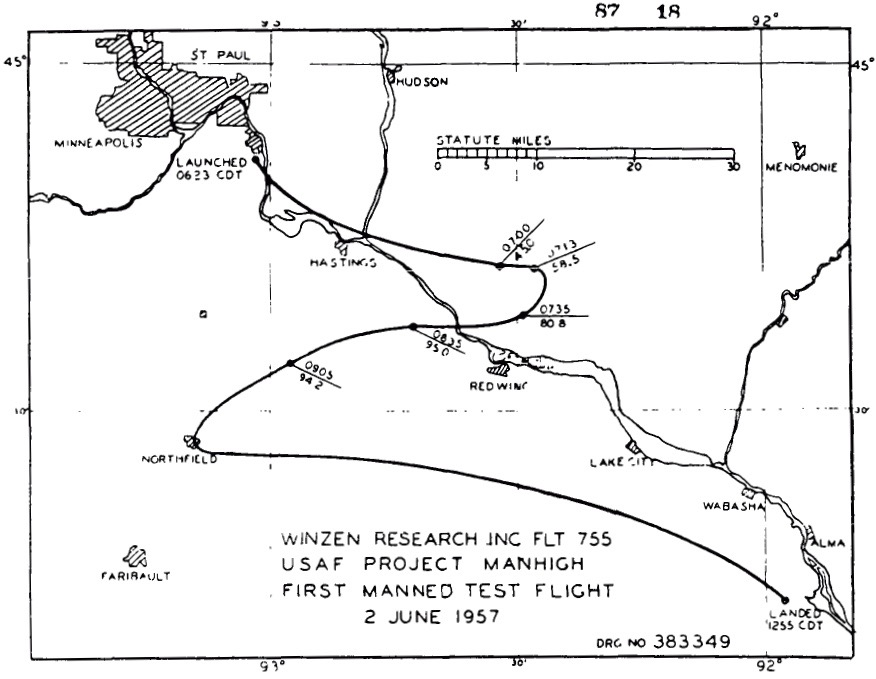
The Project MANHIGH balloon and gondola were designed and built by Winzen Research, Inc., South St. Paul, Minnesota. The gondola was used in all three MANHIGH flights (Kittinger, June 1957; Simons, August 1957; McClure, October 1958).
The balloon was constructed of polyethelene sheet with a thickness of 2 mils (0.002 inch/0.051 millimeter). The seams were bonded using a heat-sealing technique which had been developed by Otto Winzen. When fully inflated with helium, the envelope had a volume of 2,000,000 cubic feet (56,634 cubic meters) and diameter of 172.6 feet (52.6 meters).
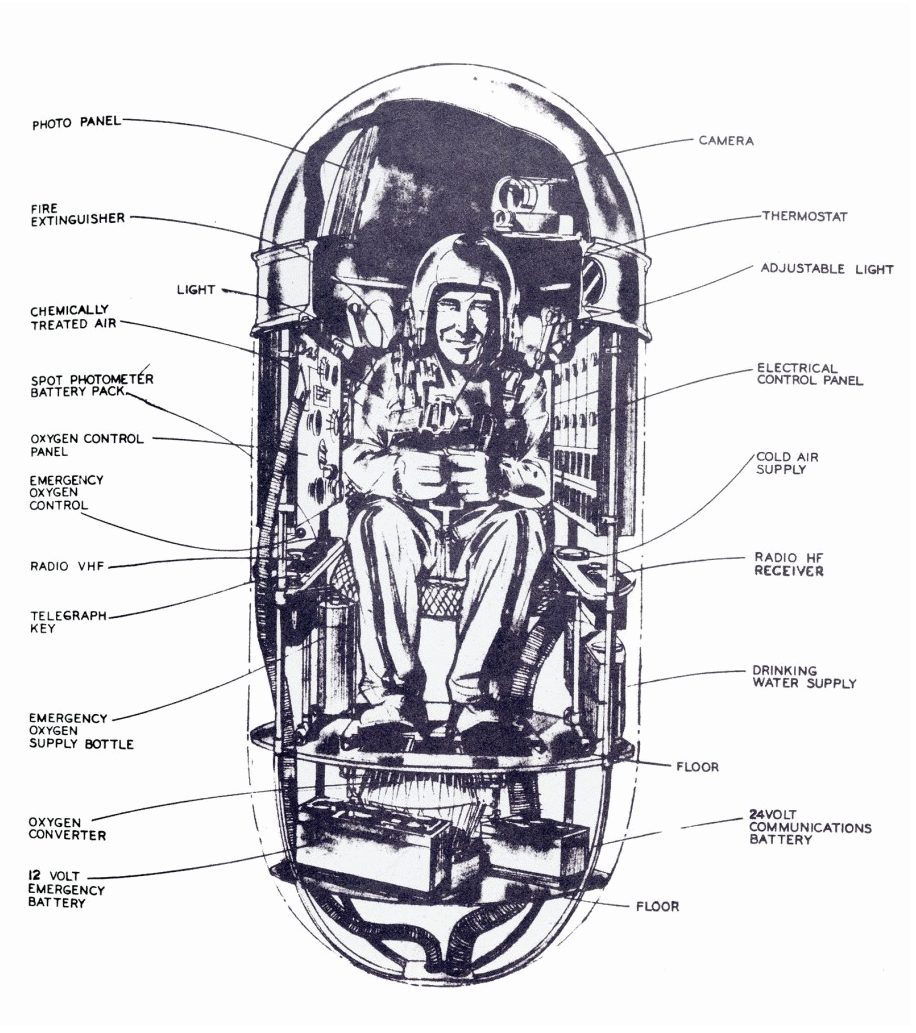
The gondola is 8 feet high and 3 feet in diameter (2.4 × 0.9 meters). It consisted of a cast aluminum section with 6 portholes which served as the primary load-bearing unit of the gondola. The rest of the gondola consisted of an aluminum alloy cylinder and two hemispherical end caps. The capsule was pressurized and filled with a 60-20-20 mixture of oxygen, nitrogen, and helium.
The gondola was suspended from an open 40.4 foot (12.3 meter) diameter parachute, which was, in turn, attached the gas balloon’s suspension rigging. Four explosive devices could sever the attachments and release the gondola and parachute.
The balloon, parachute and associated equipment weighed 1,012 pounds (459 kilograms). The gondola and installed equipment weighed 598 pounds (271 kilograms) and carried another 246 pounds (112 kilograms) of used lead-acid batteries as ballast. Kittinger, with his personal equipment, food and water, added 240 pounds (109 kilograms) to the payload. Finally, there was 70 pounds (32 kilograms) of equipment for experiments, cameras and film. The total weight came to 2,166 pounds (982 kilograms).
The Project MANHIGH gondola is on display at the National Museum of the United States Air Force, Wright-Patterson Air Force Base, Ohio.
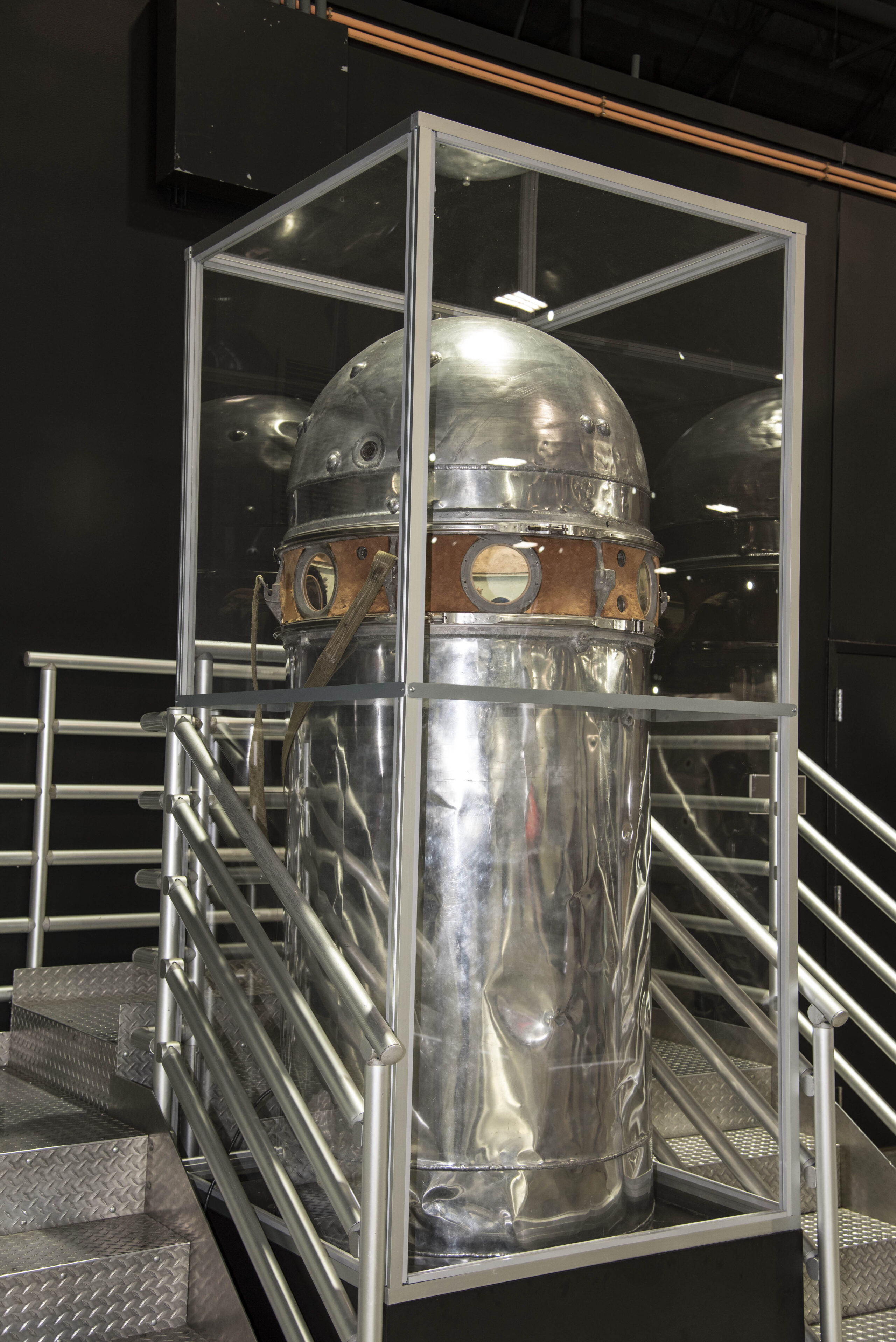
Joe Kittinger flew three combat tours during the Vietnam War for a total of 483 combat missions. On 1 March 1972, flying a McDonnell Douglas F-4D Phantom II, he shot down an enemy Mikoyan-Gurevich MiG-21. He was himself shot down on 11 May 1972. He and his Weapons System Officer, 1st Lieutenant William J. Reich, were captured and spent 11 months at the Hanoi Hilton.
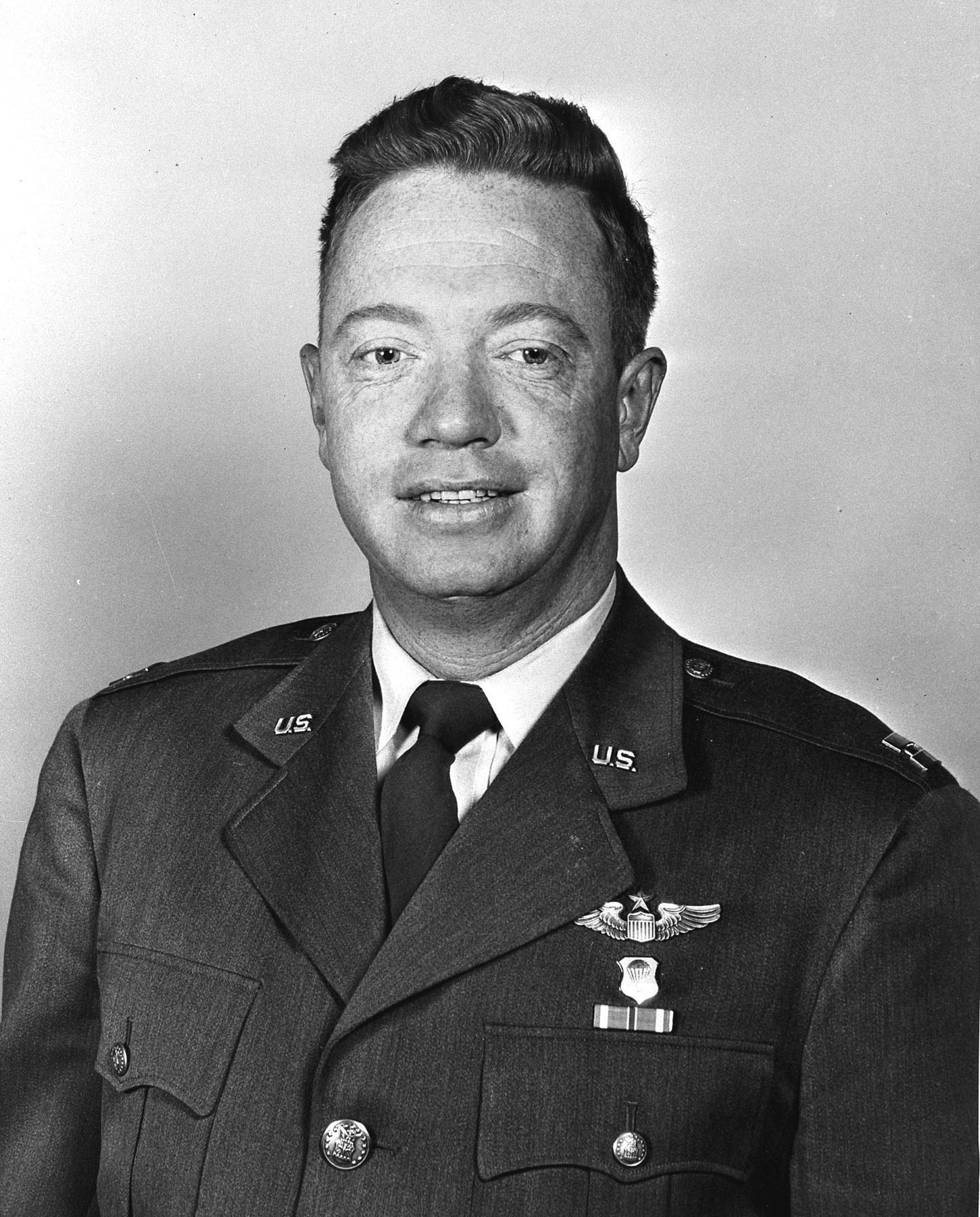
Joe Kittinger holds six Fédération Aéronautique Internationale (FAI) world records for distance set with balloons. Three are still current.² In 2012, he was technical advisor for Felix Baumgartner as he set a new world record for the highest parachute jump from the Red Bull Stratos balloon and gondola. Kittinger died 9 December 2022.
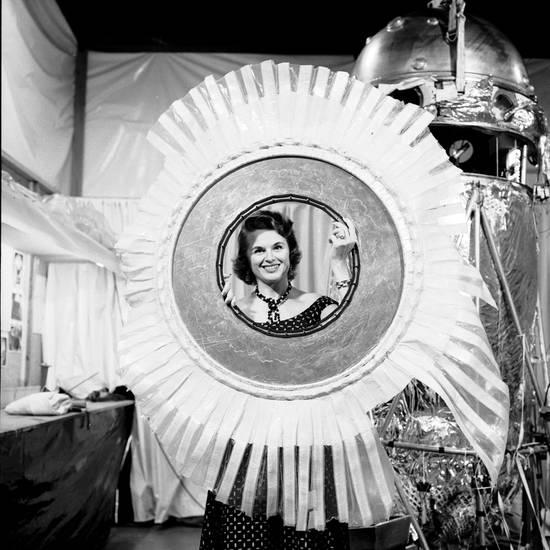
Winzen Research, Inc. was formed in 1949 by Otto Christian Winzen, an aeronautical engineer, and his wife, Vera M. Habrecht Winzen. Both were immigrants from Germany. Mr. Winzen had previously worked for the gas balloon laboratory of General Mills, Inc. Mrs. Winzen had borrowed money from her parents to start the company and held a 2/3 ownership of the company. She ran the factory and trained its workers. She also had four U.S. patents related to balloon construction.
Otto Christian Winzen was born 24 October 1917, at Cologne, Nordrhein-Westfalen, Germany. He was the son of Christian Winzen and Lilly Lerche Winzen. At the age of 19, Winzen sailed from Bremen, Germany, aboard the Norddeutsche Lloyd passenger liner S.S. Europa, on 29 June 1937. He arrived at New York City, New York, United States of America, on 5 July 1937.
Winzen studied aeronautical engineering at University of Detroit Mercy, a private Roman Catholic university in Detroit, Michigan. It was the first university to offer a complete 5-year degree program in aeronautical engineering. While there, he met the world famous aeronaut, Jean Felix Picard, and his future wife, Vera Habracht.
Reportedly, during World War II, Otto Winzen was interred as an enemy alien.
Otto Winzen later married Marion Grzyll. He committed suicide 23 November 1979 (the first Mrs. Winzen’s 59th birthday).
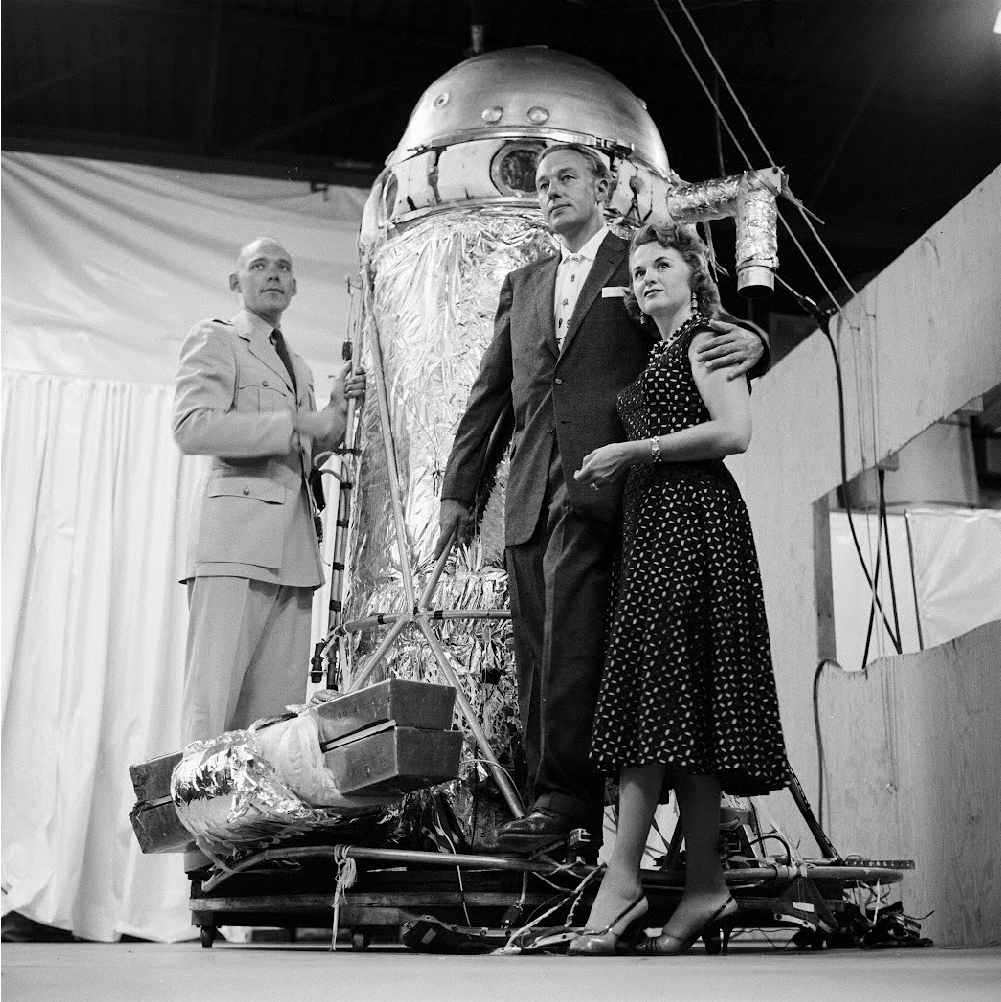
Wera Maria Habrecht was born 23 November 1920 at Heidenheim, Germany. She was the first of two children of Max Theodore Habrecht, a commercial photographer, and Maya Widenmann Habrecht. The family emigrated to the United States in 1923, with Mr. Habrecht traveling there first. Mrs. Habrecht followed later with her children, Wera and Roland. They first sailed from Hamburg, Germany, 13 November 1923, to the British seaport of Grimsby, Lincolnshire, aboard the passenger/cargo ship S.S. Dewsbury. On 16 Novemberl the family boarded S.S. Montlaurier at Liverpool, England, and then sailed for New York City. The Habrecht family settled in Detroit, Michigan.
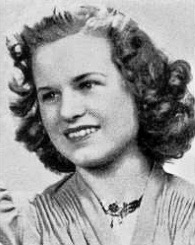
With her first name “americanized,” Vera M. Habrecht attended Cass Technical High School in Detroit, Michigan, graduating in 1939. She then studied art at the Walker Art Center and the Minneapolis School of Art, both in Minneapolis, Minnesota.
Miss Habrecht was introduced to Mr. Winzer by Professor Picard. They were married 1 February 1941, in Detroit.³ They divorced in 1958.
Mrs. Winzer was herself an aeronaut. In 1957 she competed in the 30th Annual International Gas Balloon Races in Holland.
During Project MANHIGH, she met Major David G. Simons, M.D., U.S.A.F. Major Simons flew the MANHIGH II mission, 19–20 August 1957. They were married 12 June 1959. It was the second marriage for both. This marriage also ended in divorce, 5 May 1969. Dr. Simons died 5 April 2010.
On 26 May 1975, she married her third husband, Clifford Charles La Plante, at Arlington, Virginia.
While conducting pollution research Mrs. La Plante, under the name Vera M. Simons, set a Comité International d’Aérostation (the FAI Ballooning Commission, or CIA, world record for the Longest Flight for a Female Pilot, at 133 hours, 45 minutes, 1 October 1979.⁴
Vera Maria Habrecht Winzer Simons La Plante died at Austin, Texas, 31 July 2012, at the age of 91 years.
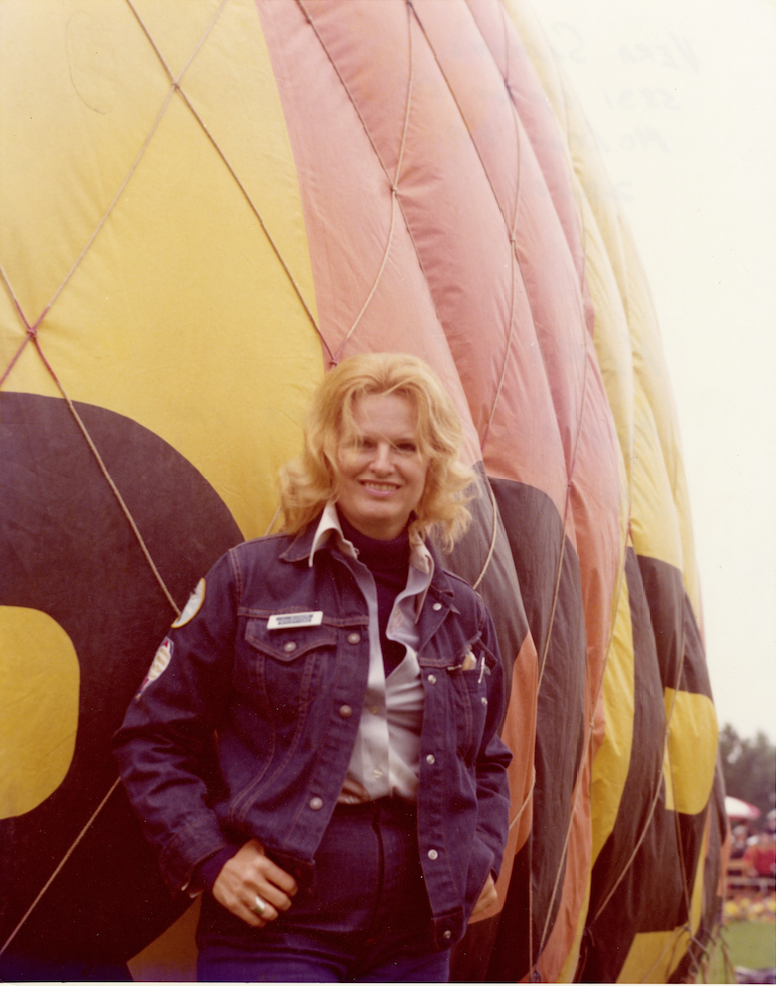
¹ Air Force Missile Development Center Technical Report MANHIGH I, AFMDC-TR-59-24, Pages 33 and 35
² FAI Record File Numbers 1045, 1046, 1047
³ Some sources state that Mrs. Winzen had been married previously, and that she had a daughter from that marriage. TDiA has not found any information to support this claim.
⁴ CIA Record File Number AA002
© 2018, Bryan R. Swopes
